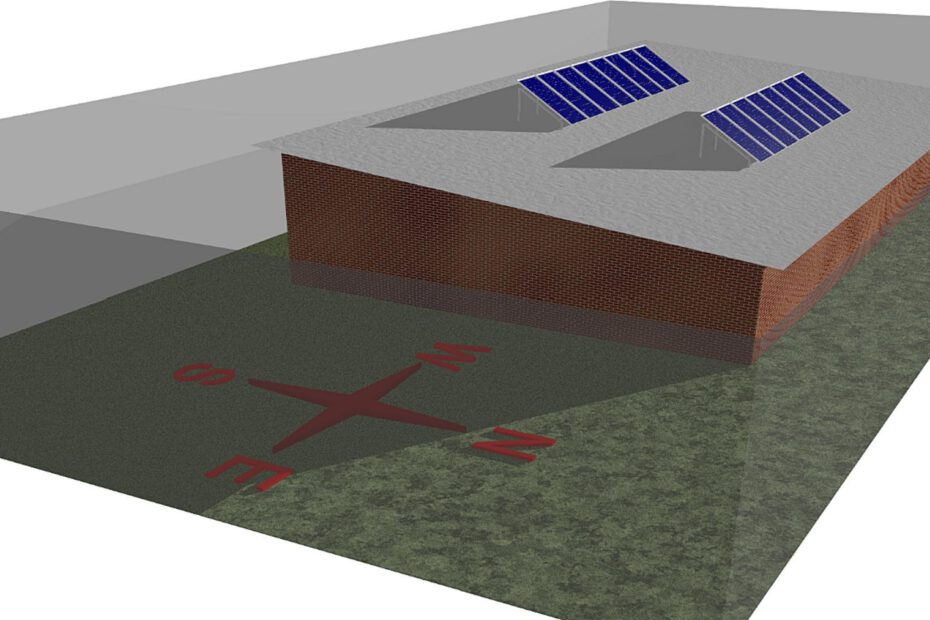Illustration of the solar photovoltaic system on a pitched shed roof.
Image: Australian National University, Energy Conversion and Management, Creative Commons license CC BY 4.0
With the efficiency of solar photovoltaics (PV) going up, one technological development stands out—bifacial solar panels. How are they different from the traditional monofacial modules? Bifacial solar panels capture sunlight from both the front and back, presenting the potential for increased energy gain. A recent study conducted by researchers at the Australian National University (ANU) looked into the performance gains of bifacial PV systems compared to traditional monofacial panels. They focused on rooftop installations specifically- hence, the findings are highly relevant if you are planning to install a solar system on the roof.
Key Findings from the Study
The research highlighted several key findings:
- Reflectivity Matters
The study revealed that rooftop reflectivity plays a crucial role in enhancing the performance of bifacial PV systems. Systems placed on highly reflective rooftops demonstrated energy gains up to 22.6% higher than monofacial systems. - Optimal Tilt Angles
Unlike monofacial modules, bifacial modules exhibit higher optimal tilt angles for maximum energy generation. The study emphasized the importance of tailoring system design to specific roof conditions to achieve optimal performance. - System and Module Design
At the module level, parallel interconnection of top and bottom substrates was identified as important for achieving high yield gains. Without parallel substrates, bifacial gain decreased by 0.9%, particularly in systems with reflective rooftops. - Individual Module-Level Optimizers
The study introduced another approach to further enhance energy yield—individual module-level optimizers. These optimizers leverage increased rear illumination patterns at the edges of bifacial systems, improving overall energy generation potential by up to 1.4%.
Implications for Rooftop Solar
Traditionally, research on bifacial modules focused on large ground-mounted installations, with limited exploration of their potential on rooftops. This study addresses the gap, providing a comprehensive analysis of the benefits of bifacial solar panels in rooftop applications.
Accurate modeling, combining Monte Carlo Ray Tracing (MCRT) simulations with detailed electrical models, allows for a more nuanced understanding of factors influencing energy yield. The results emphasize the need to consider rooftop reflectivity, optimal tilt angles, and system design to maximize the benefits of bifacial technology.
In conclusion, the adoption of bifacial solar panels on rooftops presents a promising avenue for increased energy generation. By understanding and implementing the insights, we can help you unlock the full potential of your solar installation, significantly increasing the energy yield and savings. Contact us for a custom-made solar system design.
Source: “Accurate modeling of the bifacial gain potential of rooftop solar photovoltaic systems” – Published in Energy Conversion and Management.




